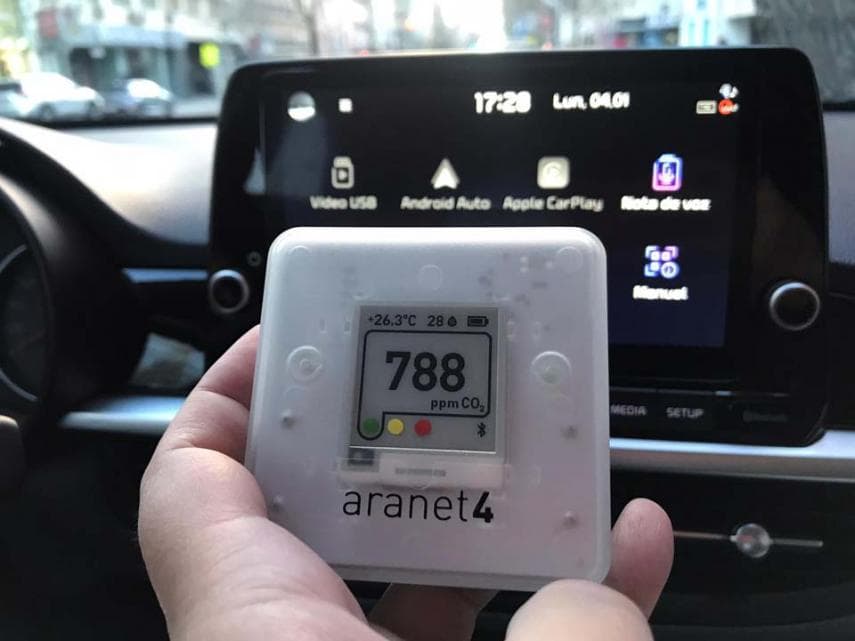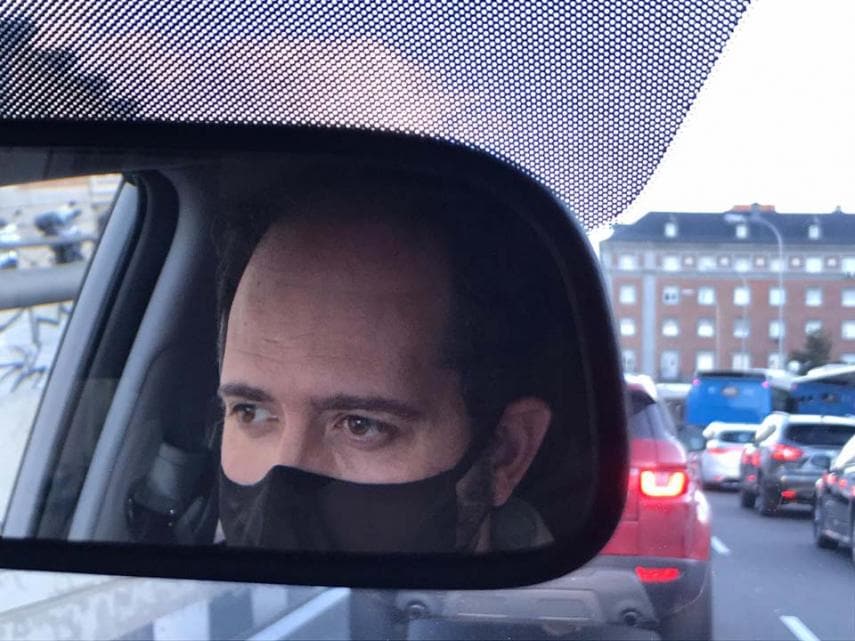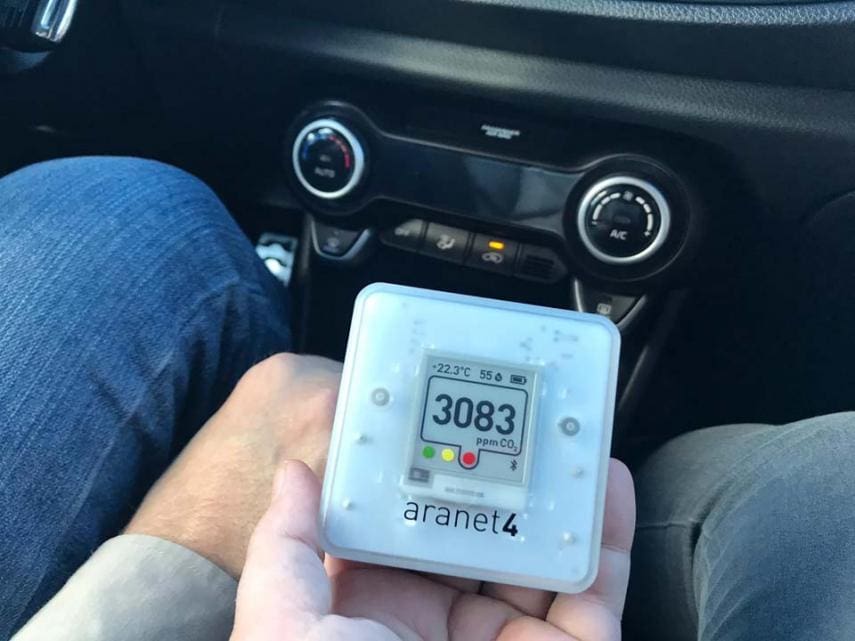These are the moments of the greatest risk of contagion in your car according to a CO2 meter
How we utilize our vehicles can also play a role in spreading the virus. But perhaps it is not yet being talked about as much as one might expect. Are they safe in times of COVID? How does the quality of the air we breathe in a vehicle cabin affect the spread of the pandemic? AUTO BILD has investigated this matter by collecting objective data in an effort to order to come to some conclusions with an acceptable level of reliability. After many kilometres in different driving conditions we have been able to conclude that these are the moments of the greatest risk of contagion in your car according to the measurements from a CO2 meter.
Coronavirus
In a short time, it will be a year since the state of emergency was declared for the first time in the fight against the coronavirus. After much focus was placed on contagion spread through contact surfaces, the World Health Organization (WHO) finally recognized many months later that the other major concern, if not the most important, was the aerosols exhaled when breathing. And hence, greater emphasis was placed on the importance of avoiding closed and poorly ventilated places.
Coronavirus: how to monitor the air in your car
How do you know if a closed place has optimal ventilation? There is still no technology that in real time allows us to determine if the virus is present in a specific space. However, in the market, portable CO2 meters such as the one we have used for this research are proliferating.
These are small portable devices equipped with batteries that detect the parts per million (ppm) of CO2 in a location according to user defines time intervals ranging from every 1 – 10 min schedules. The high-end meters with infrared technology have a price of between 100 and 200 euros.
Experts say that healthy CO2 readings should be below 600-700 ppm. And it is considered that above 700 ppm the concentration of CO2 is high. Readings above 800 ppm should be considered worrisome and efforts to improve the fresh air circulation should be made.
How to quarantine your car in times of coronavirus
Due to their reduced weight and small size, wireless CO2 meters can be placed in a private home, an office, a cinema or inside a vehicle, as we have done in our testing. But always place them in realistic places where the measurement is not altered by being right next to windows, ventilation grids or too far from the people concerned… or, on the contrary, too close to your own breath, especially, if you are not using a mask.

Image: autobild.es
We have experimented with placing the sensor in different places before doing the test drives. It seems that whether you are traveling alone, with a passenger or with more people in the back row, a good intermediate place to put it is in one of the storage spaces between the front seats. This is usually a safe distance from the occupants, windows and air vents to get reliable readings.
After repeating various routes many times, with varied elements, what are the moments of the greatest risk of contagion in your car according to a CO2 meter? Here we show you what we have discovered and why.
Rolling the windows up
It is striking that before picking up my assistant, after a journey of 40 km by highway and 5 km more in the city, with the air conditioning / heating system turned off, the windows rolled up and alone in the car without a mask the reading is already 994 ppm (466 ppm outside of the car).

Image: autobild.es
This gives a striking value on the high levels of CO2 that are concentrated even when driving alone. Especially when you consider it is a completely new vehicle, with new cabin filters, tires and insulators fresh from the factory practicing normal city driving with the windows rolled up.
That is why when you travel with multiple occupants in times of pandemic, in addition to the rest of the advice detailed here, it is recommended to open the windows four fingers wide as a guideline.
The bad thing is that it can get noisy and cold – you can fix that problem that with the heater, although the energy consumption increases. In rainy weather it can be difficult to keep the windows down but make sure to go back to the four fingers opening as soon as conditions permit.
My companion and I put on our masks as we entered the vehicle and started driving, the CO2 values which were already high, did not stop rising (we were quickly at 1200 ppm). Shockingly, in 5 minutes moving at urban speeds, but always lower than 50 km / h, we get to 1662 ppm!
This illustrates the importance when it comes to taking non-cohabitants in the car and lowering your guard, even if it is just “from here to there”.
To quickly bring the level down we open the windows again to those four fingers and minute by minute, our CO2 meter returns to safety values as the car rolls down the road.
Not wearing masks
As you can imagine, another moment of greatest risk of contagion in your car according to a CO2 meter, is the one in which someone partially removes their mask (leaves the nose exposed) or completely rides without it on or has it poorly adjusted on their face.

Image: autobild.es
In this use study we wore just released, washable approved masks with specific anti-Covid-19 treatment and perfectly adjusted. The effectiveness, of course, would be reduced or even nullified if we lower them even for a few moments.
Eating, drinking, smoking…
Another moment of the greatest risk of contagion in the car is eating, drinking, and smoking because obviously it requires lowering the mask and the possibility of sharing aerosols. Even if it is involuntary it can increase the CO2 in the passenger compartment – imagine if somebody is a coughing or sneezing…
Talking, shouting and singing
Following the recommendations of the experts, in our experiment we tried to limit our talking as much as possible. If we must speak, we do it at a moderate volume and we wait for the pandemic to be over to accompany the music on the radio with improvised karaoke again. And nobody, under any circumstances, will lower the mask to speak on the mobile phone: hands-free on speaker in this case or the driver with headphones. With these elements the mask should not be an impediment to being understood while on the phone.
Coronavirus: am I obliged to leave the key in a parking lot?
Avoiding unnecessary and loud conversations is especially important in public transport, taxis, Uber, Cabify… Always try to have the driver and passengers wear a mask and have a separation screen. Even in these conditions talking should be minimized to only the essentials and without raising your voice too much.
Rain
This is another one of the greatest risks of the virus contagion in your car according to the CO2 meter. Why? It is easy to understand: nobody wants to get wet or ruin the interior of the vehicle… That is why when activating the windows to keep the rain out there is another critical situation in the face of the increase in CO2 on board (in our meter, up to 1750 ppm)… and the possibilities of contracting the coronavirus.

Image: autobild.es
Tunnels
We continue with the heating off since the interior temperature is 22º C. But when entering the first tunnel (despite going to the maximum allowed 70 km / h, without traffic lights and light traffic), the values continue to increase. In just 5 minutes driving underground like this, we went from those figures that were worrisome, to the peak of 2247 ppm! And if new passengers get on it becomes even worse.

Image: autobild.es
Air recirculation
Soon, due to the bad smell of a nearby river and that the car we are following is burning too much oil and expels stinking smoke from its exhaust, we press the recirculation button and the CO2 figures remain as high as before and they even get worse, although we continue at a constant speed of 70 km / h.
In a matter of seconds, the windows start to fog up on our Kia Picanto, so it is advisable to turn on the vehicle’s ventilation system for the first time. And magic! As airflow enters again – especially if it is from outside and with some power, the problems of the visibility and the quality of the air in the passenger compartment are solved. The CO2 figures begin to drop.

Image: autobild.es
However, the best way to get back to safe levels was to exit the tunnel. We could drive normally now with the windows up and a comfortable temperature in the car: with CO2 values between 672 and 746 ppm. Good!
Narrow streets
During our field work we have also observed another of the moments of the greatest risk of contagion in your car according to a CO2 meter is when driving through narrow streets. You must slow down it’s normal that the air flows less between the buildings than when one travels through large tree-lined avenues or inter-urban roads.
Car stopped
Another aspect that triggers the numbers on the meter are traffic lights, construction sites, crossings, traffic jams… and any other circumstance that creates stop and go traffic. To avoid activating the heating / cooling system and increasing consumption, it may be a good opportunity to lower the windows a little – rain or not – for better air renewal.
Garages?
Finally, before arriving at our house and pulling the car in the garage, we tested parking lots of several shopping centers. Surprise! Although the number of parts per million of CO2 generally increases in closed places, the ‘healthiness’ of these places depends a lot on their ventilation and this does not necessarily have to be bad (some had great ventilation). But without a meter like the one used here; it will be difficult to determine.
Conclusion
After this exhaustive work testing the cabin air in our vehicle, we can conclude that we must not lower our guard against the coronavirus. Whenever you are accompanied, it is necessary to take extreme precautions and avoid the moments of the greatest risk of contagion in your car according to CO2 meter readings.

Image: autobild.es
Always try and limit trips with multiple passengers, maintaining the maximum possible distance between passengers, avoiding non-cohabitants on board, making sure that those who ride with you carry approved masks and that they are not removed. Always try to have the car on the move (navigation apps can now be a more useful ally than ever to avoid delays), roll down the windows four fingers wide whenever possible, use the heating / air conditioning without skimping on fan power… air flow comes from outside (without internal recirculation).
Of course, this is not incompatible with frequently washing your hands with soap and hydro-alcoholic gel, avoiding unnecessary travel and being responsible, both inside and outside the car. Stay healthy!
The text above is translated, the original article available in THIS LINK.